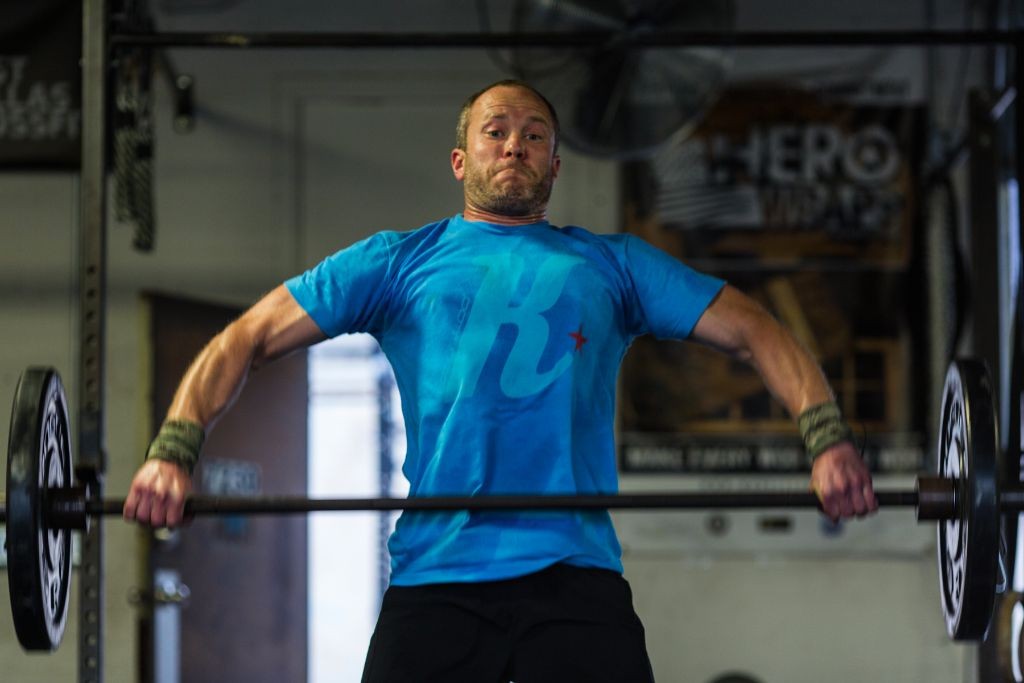When we first introduce the Snatch to our athletes in the Prep Course it can be pretty daunting. We spend two full classes breaking down the snatch into separate parts before bringing it all together and adding weight appropriately. After two full classes of learning the ins and outs of the movement and another reviewing it, there is a certain level of comfort with the snatch. In this blog post, I will go over exactly how it is broken down.
First, we revisit the overhead squat position (or as close as we could get for some of our new athletes) in order to get comfortable in the receiving position, or “catch”, of the snatch. This is noted by the “catch phase” below.
Next we go through the snatch complex. This is a series of movements that we use as a warm up to reteach positioning and bar path in the snatch. The complex goes as follows: overhead squat –> snatch balance –> muscle snatch (from hip) –> position 1 snatch –> position 2 snatch –> position 3 snatch. The snatch balance is designed to teach the athlete how to properly drive themselves under the bar into the overhead squat or catch position. The muscle snatch teaches the athlete how to move the barbell with the arms after the big hip extension.
After getting a feeling for how to open the hips and pull oneself under the barbell while keeping bar path close to the body through the snatch balance and muscle snatch, we then start to pull from 3 different positions:
- High Hang Snatch (Position 1) – Starting with the bar at the hips. The torso is vertical. You then extend the hips propelling the body into a vertical jump before pulling yourself under the barbell and ending in the bottom of an overhead squat.
- Hang Snatch (Position 2) – Also, called the hang squat snatch is a movement where the barbell starts at the pockets (similar to the first pull phase in the picture above). With a wide grip on the barbell, the bar should slide back into the hips (sweeping) while you extend the hips and subsequently pull yourself underneath the barbell into the catch position (the bottom of the overhead squat). The lift is completed when the athlete stands the bar up overhead successfully.
- Squat Snatch (Position 3) – This is basically a full snatch movement with the barbell starting on the ground. From the ground, you have to be in a good starting position to initiate the lift. This includes the chest and shoulders being over the barbell, the toes and knees being slightly turned out, and the butt lowered well below the shoulders. The weight should be in the front half of the foot. As the barbell starts to come off of the ground, 4 very important things happen:
- The knees start to track back to a position where the shin is perpendicular to the ground.
- As the knees are tracking back (extending), the weight simultaneously shifts to the back half of the foot and then to the heels.
- All the while, the chest and shoulders stay over and “hovering” the barbell.
- The hips MUST stay low to keep a consistent back angle until the bar reaches the pockets. Do not do “the stripper pole” and lift the hips up while keeping the torso in the same position. The raising of the hips and torso happens simultaneously and is perceived as one unit.
After our 3-position work we then move onto the power snatch:
- Power Snatch – The movement starts the exact same as the squat version and can be initiated in either position 1, 2 or 3. The athlete still pulls themselves under the barbell with the feet landing in the landing position or squat width stance. There is a bend to the hips but the athlete stays taller and out of a full squat.


